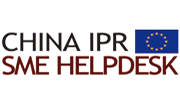22 August, 2017
“Wine is one of the most civilized things in the world . . . it offers a greater range for enjoyment and appreciation than, possibly, any other purely sensory thing.”
― Ernest Hemingway
Wine. The Greeks honoured this sacred beverage with its own deity, the Christian faith honour it as part of the sacred rite of Eucharist, and today, the history and quality of less ancient vintages has created a thriving trade around the world.
Making up the majority of what the wine industry now calls the “Old World”, Europe combines a rich history of viticulture and winemaking with modern technological innovation. In recent years, Europe’s love of wine has proved especially infectious to developing palettes in East Asia, and over the last few decades Chinese consumption has surged, overtaking France as the largest consumer of red wine worldwide. This being said, room for growth in China remains as the Chinese continue to lag behind other nations in terms of individual consumption; in 2014, France’s 51.9 litre per capita consumption dwarfed China’s mere 1.5 litres.
Europe’s old guard wineries seem well-poised to capitalise on this growth. They have spent hundreds of years perfecting their craft, and European ‘old world’ wines are sought after around the world. As a result, Chinese consumers primarily turn to Europe to slake their thirst for foreign wines— with the Middle Kingdom relying on European imports for 65% of its foreign wine trade. French reds are in particular favour, with 48% of China’s imported wines starting life on French vines, although wine produced in Germany, Spain, and Italy also enjoys considerable popularity amongst Chinese consumers1.
However, in spite of Europe’s advantages, Chinese consumers still show a preference for domestically produced wines and more than 80% of wine consumed within China is produced domestically. According to independent critic and wine expert Jancis Robinson (MW)2, quality alone does not account for this disparity. Robinson, widely held in high regard for her independent critique and support of new industry and independent wineries, has routinely visited China over the last decade to sample the country’s developing vintages. As such Jancis is uniquely qualified to comment on the development of Chinese wines, and tells us that though Chinese winemaking has improved greatly in recent years, most producers still lag behind the established vines and vintners of Europe in terms of quality.
There is of course something to be said for the effect of price on consumption. However, whilst historically, European wines have been more expensive than their Chinese competitors due to import taxes and shipping costs, these prices are now falling in line with many Chinese brands. With this barrier removed, the simple truth is that European wine brands are suffering irreparable damage to the reputation of their products amongst the developing palates of Chinese consumers, inflicted by rampant acts of counterfeiting.
In vino veritas?
Silently, over the last few decades, the Chinese wine market has become awash with fakes. Counterfeit investigations specialist and attorney Nick Bartman has had over 25 years’ experience in investigating counterfeiting and shutting down infringers and has spent the last 6 years tracking down wine counterfeiting in China. His investigations have turned up an astonishing volume of counterfeit wines ranging from cheap knockoffs sporting absurd claims (such as a French Bordeaux purportedly produced by a chateau in Luxembourg) to far more sophisticated fakery which even the original wine’s producers have trouble detecting3.
Bartman and other experts in the field estimate that as many as one in three bottles of purportedly ‘foreign’ wine in China is fake4. Inevitably, even the best fakes fall far below the standards of quality which would be expected of European wines, severely damaging the reputation of European producers amongst Chinese consumers.
Due to a historical lack of understanding of Chinese IP rights, and resultant failure to act early to counter this tsunami of illicit labelling, the wine industry now faces the daunting task of tackling an established and sophisticated web of infringers, or risk losing valuable ground in a rapidly developing market.
A framework for action
Despite the seemingly grim state of counterfeiting in the Chinese wine market, European producers are not without recourse. Over the past few decades, Chinese legislators have built a comprehensive legal framework around IPR protection and enforcement. Despite the western media’s negative outlook on Chinese IP protection, the mechanisms for registration, protection and enforcement of intellectual property are more accessible to European wine makers than many believe.
Furthermore, Chinese authorities themselves are especially keen to crack down on counterfeiting of wine, motivated by both IP as well as health concerns. Much of the liquid found within counterfeit bottles is of substandard quality or has been found to be “Frankenwine” produced entirely by chemical and laboratory methods, never seeing a grape, let alone a French vineyard5.
Despite the ready ally present in the Chinese government and Chinese wineries6, the European winemaking industry must band together and act promptly on this issue. Our sources in the European wine trade have all reported a reluctant acceptance of Chinese piracy in the European wine industry. With Chinese counterfeit wines now leaking to the West however, it is crucial that producers act to stem the flow. The IP framework is established in China, and protection and enforcement of rights are not only available, but also more accessible than ever before. All that remains is for European producers to take the fight to the infringers and work with the local authorities to assert their rights on Chinese soil.
Edoardo Caroli, China IPR SME-Helpdesk





